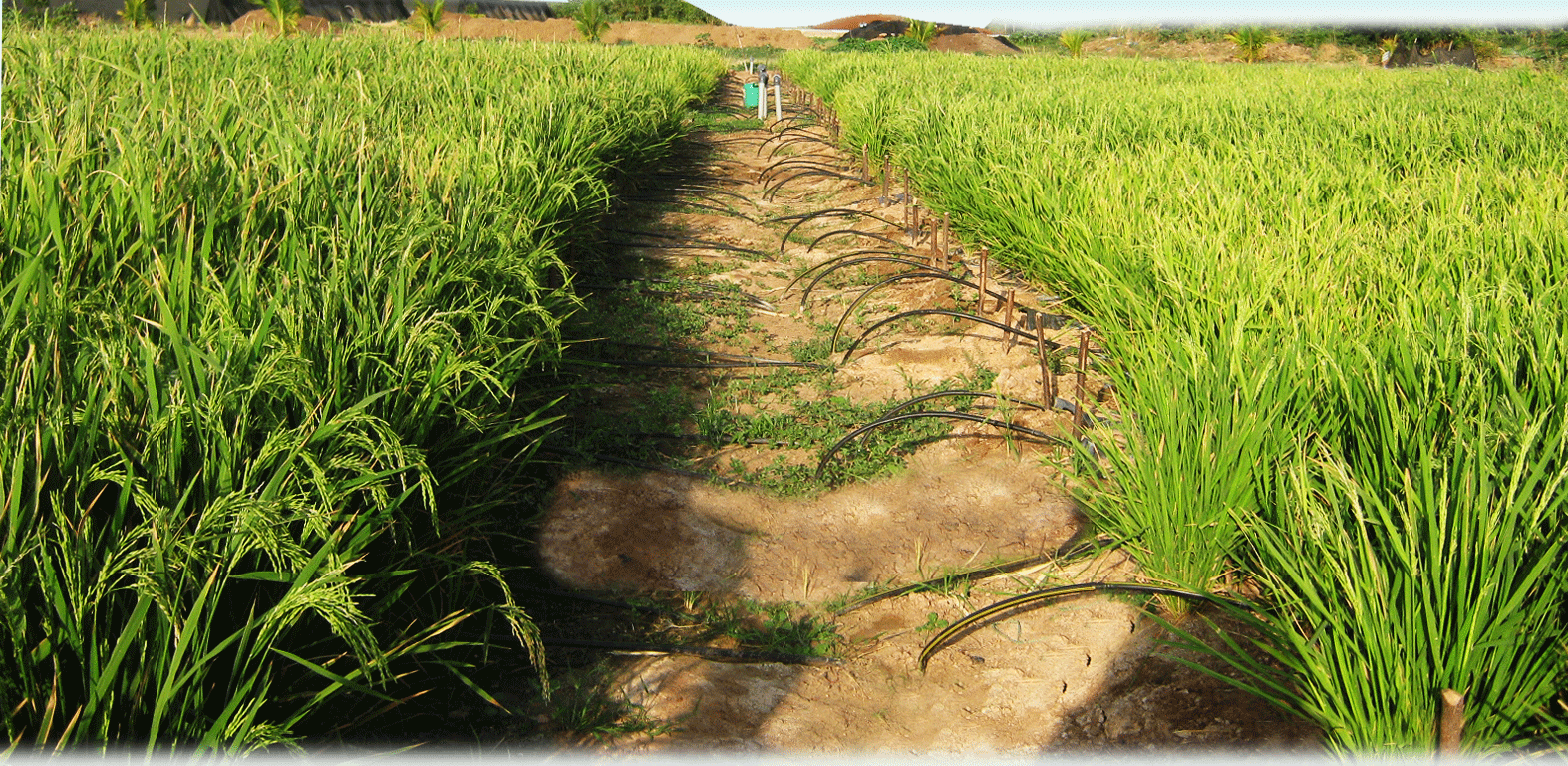Welcome to Jain Irrigation Systems Ltd.

Blog at Jains - Drip irrigated Rice crop! Can you believe it?
We all have come to believe that Rice requires standing–water for successful cultivation. Truth may be, mankind have tweaked Rice to grow in standing water, because it suited the then prevailing conditions!
The much despised relation of rice and water began accidentally. In fact, the first records of rice cultivation projects it as a dry seeded crop grown in ends of high land and forests cleared for shifting cultivation. It is in China that the process of puddling soil and transplanting seedlings began in river valleys and low lying areas with likelihood of flood and submergence of rice plants. As transplanting gives a head–start for rice seedlings in their fight with weeds, this method took an easy route of acceptance in other parts of the world especially in South Asia where originally rice is grown under dry land conditions.
This historical perspective and the vestige of belief that rice would be better off if puddled and transplanted has brought us to the present situation of excessive use of water for irrigating rice.
A change of this attitude is going to be difficult and time consuming. But a change is all that is needed and the change is needed now!
There is a varied scenario also –––
With the advent of Canal Irrigation, came the assured supply of water, throughout the season of a crop. Till then, floods will drain into sea no sooner the rains come. When dams were built across rivers, farmers were assured of sustained supply of water, for a longer period.
Farmers were left with little choice when their fields were inundated with river–flowing–water, through seepage. They had to find a crop which would tolerate this adverse condition (zero–oxygen in the root zone, for long durations). Rice fitted this requirement, because it has a special root constitution with air carrying tissue layers (aerenchyma) in the roots that provides aeration even in submerged situations; because it was an–all–season favourite in the market–place, being a staple food in most of the regions of the country.” Green revolution” supplemented this enterprise, by inventing high–yielding varieties of rice, through appropriate breeding–techniques.
Thus rice cultivation is water intensive; it uses1600 mm per season as per literature, (65 lakh l /ac). But in actuality much more volumes are applied in many delta areas in India (up to 2200 mm, 90 lakh l /ac).
Does paddy need all that is poured into the ground!!! Does water need to stand above the soil surface in a rice crop??? Can the present way of water use sustain??? These are questions that trouble all of us if we are really concerned about the future of water availability.
In the case of several other so called high water user crops– sugarcane, banana, vegetables etc. we could very easily prove the futility of the belief that they are water Guzzlers. Actual water need is found to be 50 – 60% less than what are thought to be the water requirements. This is made possible by drip irrigation technology; moisture availability in soil is kept close to field capacity and crop is grown to result in enhanced yields.
At JAIN IRRIGATION we discussed this as an ongoing process, because we believe in more crop per drop. But when it comes to rice cultivation the strong traditional belief of standing water in rice fields throughout the season makes it a very tough proposition to bring in changes. Jain Irrigation thus proceeded to take up field trials on its own and in collaboration with other scientific institutions.
We believe that results from such trials would lead to an actual extension possibility of that technology in the coming years. Of the 43.8 million ha paddy cultivated in India, even a 10% of it gets into drip irrigation that is 4.4 million ha. The impact would be multifold:
- Substantial saving of irrigation water; meaning irrigating more area under paddy with the available water.
- Substantial saving of energy; a boon for a nation that is power starved.
- Increased production of rice; a much needed requirement for the country.
Yield under drip was 3.8 t/ac as against 3.1 t/ac under conventional irrigation. Still higher increases are possible with modifications in fertigation and other agronomy practices.
Water use was reduced by 65% and power for lifting water reduced by 55%.
We achieve water and food and energy security through this intervention.

Drip Lines on Beds with Germinating Rice - Maturing Paddy Under Drip Irrigation

Maturing Paddy Under Conventional Flood Irrigation


